"The Kodály Centre brings out the best in us, performers."
Paying tribute to the 10-year-old Kodály Centre
Kodály '10 - Home to Inspiration
please click on the title!
film of Pannon Philharmonic Orchestra with English subtitle
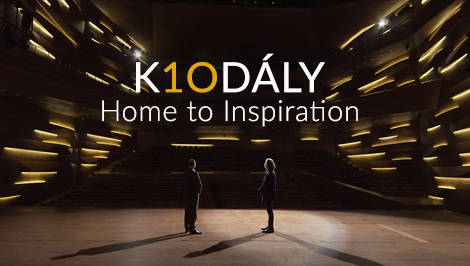
NO film on architecture. A FILM on an orchestra’s home. A FILM on an amazing construction. A FILM on the soul of a building.
With incredible close-up images to bird-eye view drone photography, from genuinely intimate details to its overall essence. What gives a building a soul? What makes the KODÁLY CENTRE unique? How can spirit and enthusiasm manifest themselves? How did plans and viewpoints clash? What tension spanned between dreams and reality? How did our protagonists bridge the gap? Why does one creator say to his once-partner today that he used to loathe him back then?
Behind-the-scenes secrets are put in the limelight; the camera enters niches never seen before, technical solutions get unveiled. Our two protagonists are looking back on the past ten years. They are chatting, are recalling past events and then - while forgetting about the cameras - lose themselves in one of the most memorable shared episodes of their lives, endlessly reminiscing …
The Kodály Centre, home to the Pannon Philharmonic, is celebrating its 10th birthday.

"Welcome! I came well myself."
KODÁLY CENTRE BRINGS OUT THE BEST IN US, PERFORMERS.
It is quite a challenge to put pen to paper to write an article like this, as the power of music to change even space and time is far from the world of engineers. How can a building project fit into a dimension, where violins made of dry wood and metal are actually endowed with a soul? Does the project start when the cornerstone is laid or when somebody first dreamed of it? And where does it end? Does it ever end at all? If the Kodály Centre were to be awarded a prize with regards to its 10th anniversary, and I were to give credit to all those who were absolutely essential in its creation process, I would not know who to mention first. Perhaps the bishop who was ruling over the diocese of Pécs in 1811, who invited the composer Hans-Georg Lickl from Vienna to establish an orchestra and, by doing so, put the city's music life into to an international setting, which is momentous to this day? Or maybe those who conceived the idea of the European Capital of Culture? They did not connect the legitimacy of cultural products valid in a European context to the actual capital city of a member state, so Pécs could also entertain the hope to be considered for this honour. Or the musicians of the Pannon Philharmonic who have been exerting themselves tirelessly in order that this extraordinary acoustic environment should become the goal and driving force of their progress? Or rather the architects, who turned to a basic principle of nature for their inspiration and with that, they placed music's universal language into a most outstanding physical context? Indeed, they might not have known themselves what sublime creation they designed.
Photo by Róbert Bublik Róbert
Everyone who has taken to the stage or sat among the audience of the Kodály Centre in the past decade longs to return here. This building is a blessing for all those who work in it. Brahms must have been smiling while he was listening to his symphony being conducted by Gilbert Varga: all colours and shades of the tones that its composer might have intended could be clearly perceived. This effect was certainly no coincidence.
It is no widely-known fact that the working hours of musicians are measured in so-called ‘services’. Symphonic music is a universal language, which requires humility and cooperation, the active participation of the composer, the conductor, the musicians, the audience, the instruments, and the space in mutual service to one another. Music exists above us, people. In order to hear it, each of us must surpass our own individual sound. It is collaboration on the highest level.
The history of the Kodály Centre is the story of European-level cooperation venture and joint thinking. The fortunate constellation of several factors was necessary for it to come to life, and I do believe that it was not actually created - but certainly aided - by Providence, so it is not unrepeatable. It could turn into a best practice example in all respects. But what exactly about it could serve as an example? The hard work of all contributors: all of them did their very best with only the most necessary compromises that financial restraints forced upon them.
If the foundation of the architectural principle of the Kodály Centre was the Fibonacci Sequence, I take the liberty to enumerate all the contributions that led and can lead to the materialisation of a project that exceeds all expectations.
Cornerstone ceremony 25 August, 2009
Photo by Róbert Bublik
First, desire and merit. The artistic community of the Pannon Philharmonic longed for more than what they had. The orchestra's renaissance began in 2003, almost at the same time as the birth of the EKF2010 project, but quite independently from it. The ensemble would give its concerts in a university's assembly hall, while the residents of Pécs had wished for the orchestra to have their own place to rehearse and to perform for nearly 150 years. The ensemble made quick-paced progress, so it soon became clear that the university's assembly room was fit neither to meet the set professional goals nor to fulfil the simultaneously increasing audience demand.
Second, shared recognition. Although music has the power to touch people's hearts and minds in any physical environment (even in a park), professional classical music concerts are greatly affected by the actual environment from both the performer's and the audience's perspective. Music has several layers that can exert their effect, indeed, be heard, only in the right acoustic setting. A concert hall is not a large room with many seats but a building designed to achieve specific acoustic and performance purposes. Non-connoisseurs normally do not criticise the acoustics but regret the absence of an exquisite environment, which is also crucial. Yet, the primary function of a concert hall is not beauty. The atmosphere and acoustics of a concert hall have an impact on each step of the complete creative and performance process in both a good and bad sense. The hall itself is an active participant in the performance and stimulates the entire production. Not only in Pécs but everywhere in the world. Its significance is, therefore, invaluable. The Pannon Philharmonic articulated the need that an adequate acoustic setting was absolutely essential for their professional development.
Third, a will and a vision. The local authorities had a strong intention to enhance the development of the orchestra. The EKF2010 project outlined a development vision that was based on the progress of the cultural industry. Its supposed potential and the project plan submitted for it brought closer the materialisation of the professional vision of the orchestra. By 2006, when the decision regarding the building project was to be made, the orchestra had needed to reach a development stage where they could demonstrate that the concert hall was an absolute necessity. The EKF2010 project and the concert hall functioned as catalysts for the ensemble's professional advancement. Music-related and management-related work proceeded at a miraculous pace in those years. Already the possibility of a potential construction had an enormously fertile effect on the artistic endeavours, which all music groups would need.
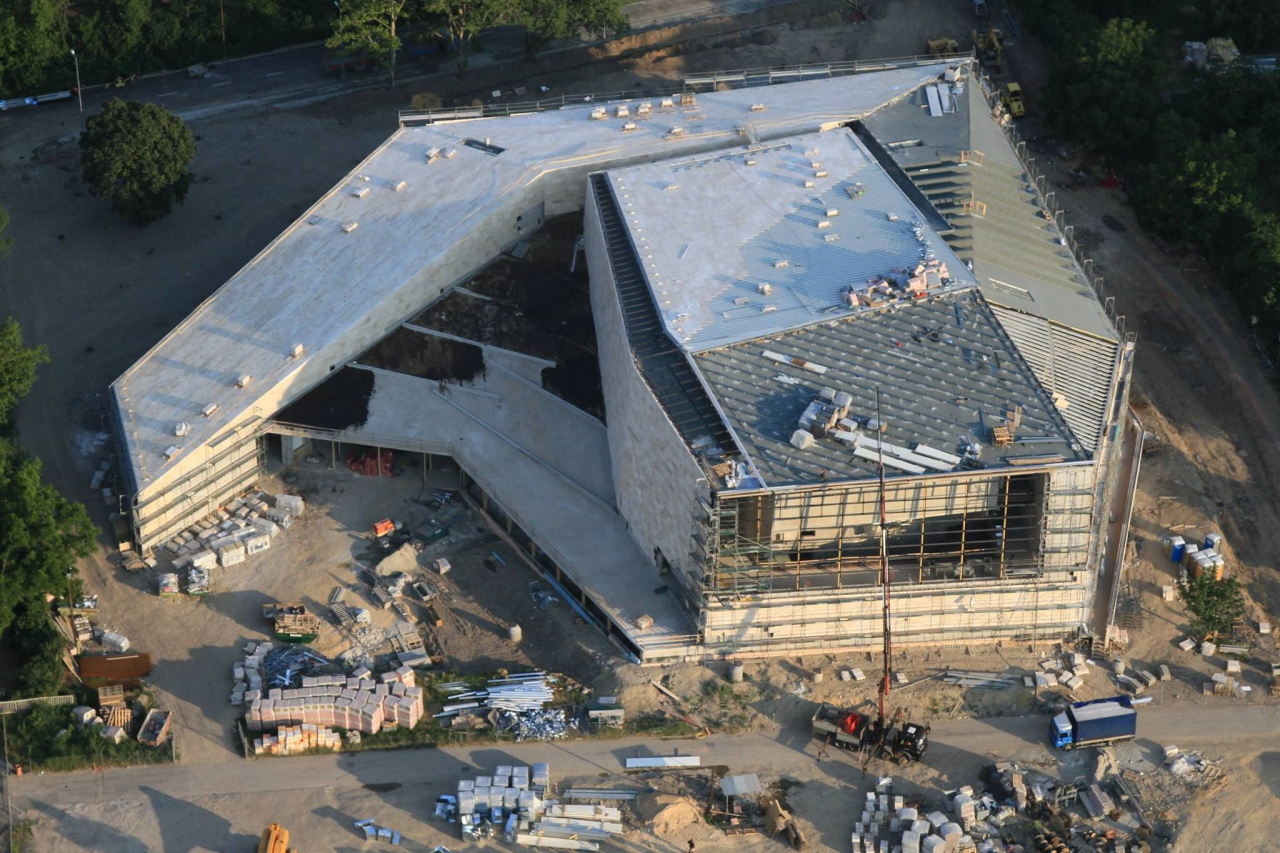
Photo by László Körte Körtvélyesi
Fourth, the opportunity and the know-how. Thanks to large scale investment possibilities lying in EKF2010 and owing to a victorious international tender, the opportunity finally arose for the greenfield construction of a concert hall, even with quite a strict budget. A new concert hall opened up prospects that have a great wealth of potentials in store for us right to this day. The professional standards of the orchestra had to step up several levels so that by the time the hall was completed, we would meet the requirements of its future international standing and of its role as a resident orchestra. Traditionally, Pécs has a very active cultural scene which was exceptionally dynamic in those years. Still, there is little experience and know-how not only in Pécs but also nationwide about how a cultural vision could be turned into a project and how that project can be managed right to completion. The experts of EKF2010 programme played a major role in harmonising the orchestra's goals with those of the EKF2010 project. In particular, József Takács, Zorán Patartics or Zsolt Szokolai contributed significantly to this singular joint venture.
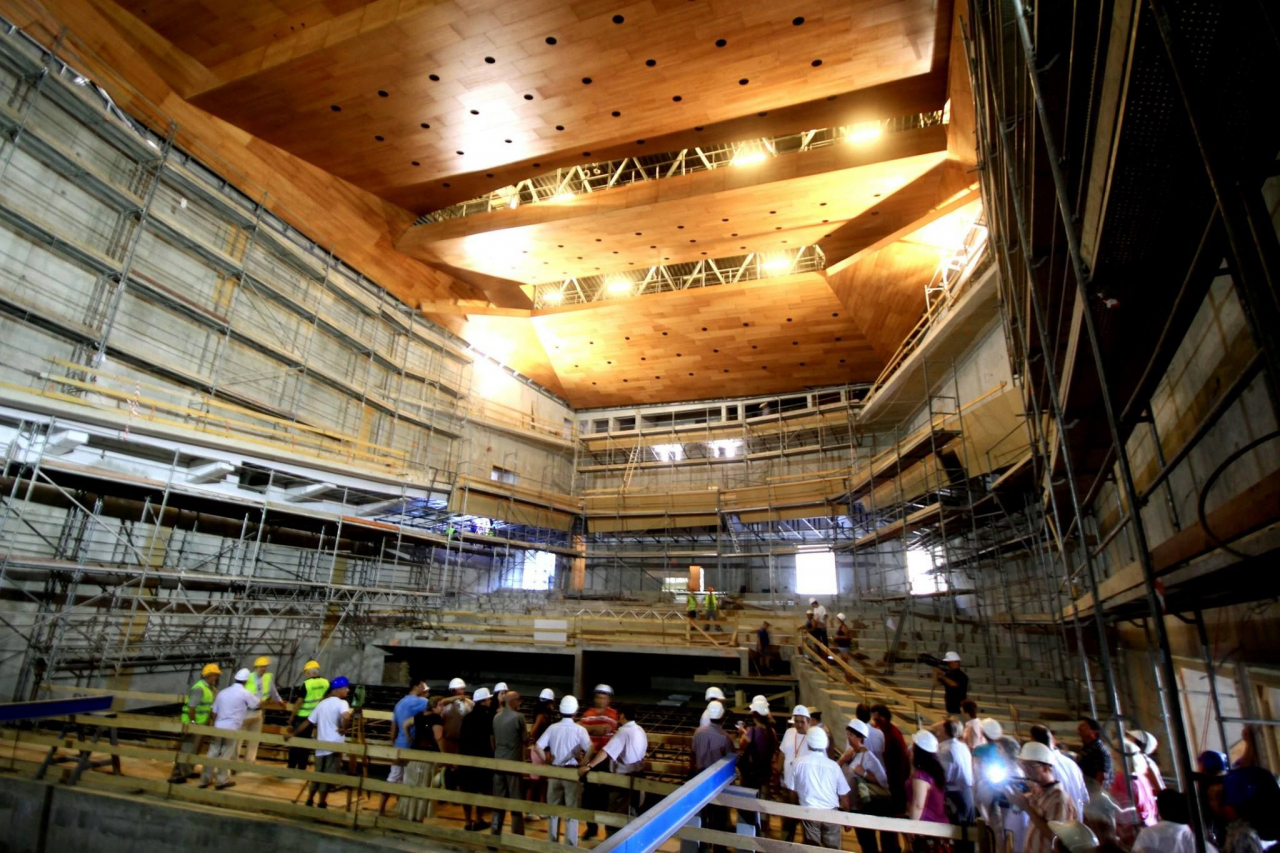
Photo by László Körte Körtvélyesi
Fifth, a role model. In Hungary, the Palace of Arts (Müpa) was the only building that was constructed with the sole purpose of a concert hall. The Pannon Philharmonic had been performing on its stage from the very beginning. We had had an excellent relationship with its management, and the construction of the Kodály Centre soon became a common cause of Hungarian music life. Müpa's architect Gábor Zoboki, its late Managing Director, Imre Kiss and András Csonka, Deputy General Manager, played an immense role in Müpa's acting as a role model for the Kodály Centre. They contributed to the final result we know today with expert opinions, suggestions, and models. The quality of the Kodály Centre, the brilliance of the productions taking place in it as well as the excellence of the Pannon Philharmonic brings about many outstanding joint projects with Müpa. Its current CEO, Csaba Káel considers us partners. It is important to note that unfortunately, in the past decade - since the construction of the Kodály Centre -, no new concert hall has been built in Hungary, even though the country's music culture would certainly deserve to be given an opportunity for more appropriate acoustic settings.
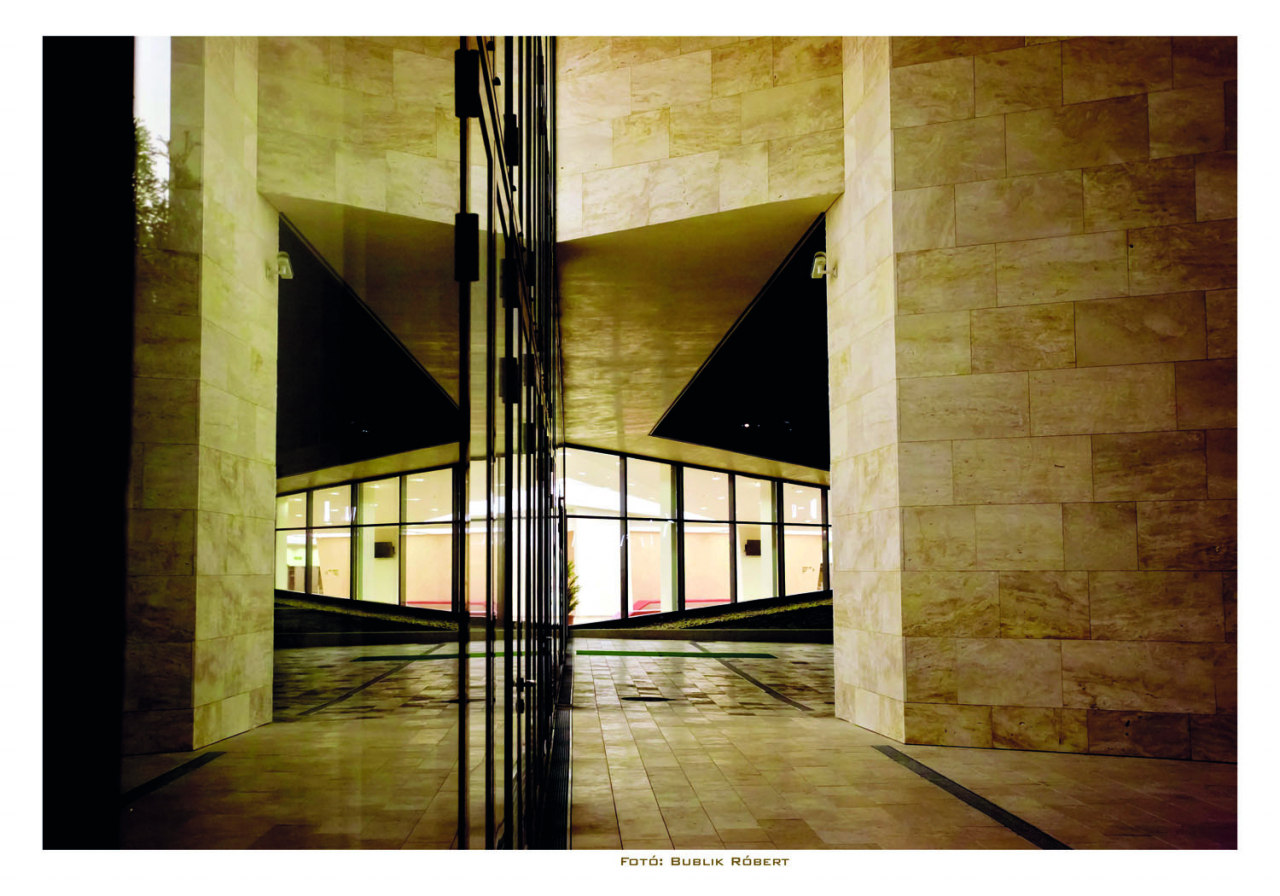
Sixth, we needed those designer architects who would not exclusively think in material and form but would also consider the soul of the hall. I am convinced that the Kodály Centre would not have this immense impact either on the performers or the audience if the basic principle of the design were not the Fibonacci Sequence. Not because of the numbers, however. The initial idea of the architects was the shape of the ear, the image of the universal human capacity to hear music, which also describes the basic internal proportions of nature and the arts. This basic principle is similar to the main theme of a symphony. As the violinist Maxim Vengerov put it, Ferenc Keller and the architects of Építész Stúdió, Richárd Hőnich, Tamás Fialovszky and Benedek Sólyom constructed "an architectural Stradivarius" in Pécs. The creative process, which I also had the honour to be part of, was most respectable. This team managed to produce an architectural world that serves music and musicians with humility but also with autonomy and intelligence. I lift my hat to them to this day. Their professionality and open-mindedness are exemplary qualities in my eyes. Similarly to the greatest composers, they could mobilise their creative energy for the ultimate goal and could understand the essence of it.
The designers of Kodály Centre: Ferenc Keller, Tamás Fialovszky, Richárd Hőnich and Benedek Sólyom
Photo by Róbert Bublik
To quote the Hungarian poet, Attila József, you yourself must be the seventh. Last but not least, I, myself, also had to contribute to the materialisation of the project. During my university years in Vienna, I attended and played hundreds of concerts in marvellous halls. The timbre which can be achieved in a space dedicated to symphony orchestras is deeply instilled in me. I made tremendous efforts to integrate artistic aspects into the design and the construction processes. I fought hard that the musicians could make themselves heard in the description of the architectural programme as part of the project proposal. For all this, however, I had to learn the language of architects. I took lessons to be able to interpret the plans, and I translated the needs of my musical profession to the language of architecture during our countless negotiation meetings. My friends, many experts, the members of the orchestra were of massive help to me. During the actual construction period, I pointed out the details that were vital from the perspective of the final outcome, so that it would not occur to the investors to save money in these essentials. It was no option for us that the success of the project would weigh on the conscience of the architects and contractors, but for that, I had to be well-informed. I had to rise to the challenge, and I had to learn to articulate what we needed and what made a good concert hall.
1 December, 2010 Opening concert. Piano soloist: Jenő Jandó, conducted by András Vass
Photo by Róbert Bublik
The Kodály Centre plays a central role in making Pannon Philharmonic a permanent cornerstone of the city's cultural industry. Spaces are partners in the music-making process, and the Kodály Center is certainly a reliable partner. It has become a colleague. Through it, order in this universal genre has been restored: now the acoustic space is a dynamic co-creator of the performance. Classical music productions are highly intellectual processes. Performers keep searching for a perfect way to develop musical characters. It does very much matter where and with whom we play Bartók or Mozart. We must also count on the acoustic effect of the hall, and there are some intimate, fragile and subtle nuances - similarly to a stage play - that cannot be complete anywhere else. Gilbert Varga, Péter Eötvös, Maxim Vengerov would not play everywhere, neither would they come to us without the Kodály Centre. Because it is together that we are strong.
The Kodály Centre does to us what was the driving force of its conception: it brings out the best in performers. Architecture, the music scene and the audience can only benefit from it.
Zsolt Horváth, Director of the Pannon Philharmonic
2020.
Excerpt from the article written upon the request of Mátyás Tutervai for the Gazette of the Chamber of Hungarian Architects
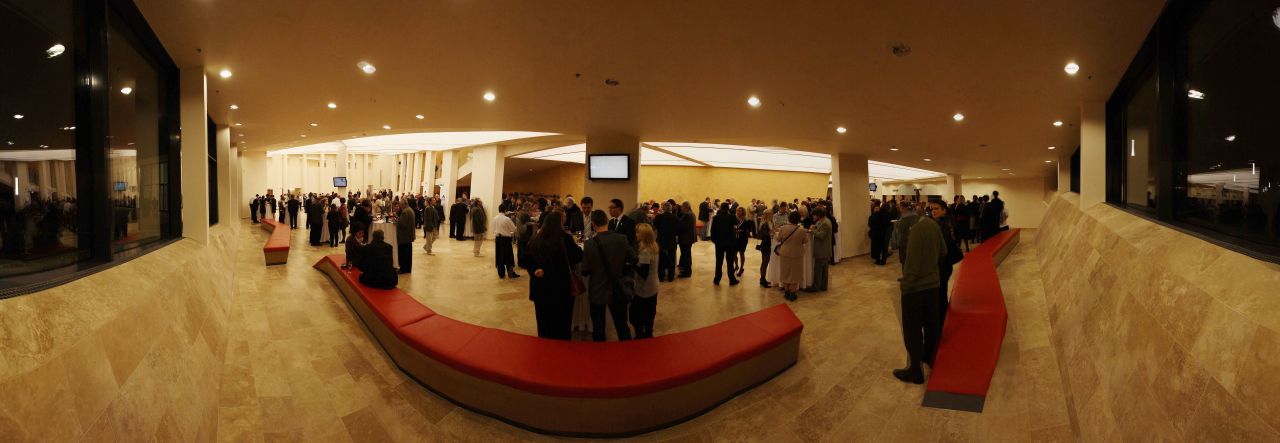
Photo by Róbert Bublik
KODÁLY '10
The designers of the building – Ferenc Keller, Tamás Fialovszky, Richárd Hőnich and Benedek Sólyom – used the golden ratio as the basic principle of their work. From a bird's eye view, the building forms a snail shell, taking into account the proportions marked by the Fibonacci Sequence. A concert hall with the seating capacity of nearly 1000 nests in the middle of it. The white limestone casing of the building also evokes snail shells. With the long line of windows, it simultaneously provides a view and arouses curiosity in the approaching visitors.
The interior of the building was planned by two Pécs-based designers, László Rádóczy and Zsolt Tolnai, while the acoustic consultant Éva Arató can take pride in the acoustic excellence of the concert hall.
Awards and recognitions of the Kodály Centre:
Design Award 2011
Architecture Prize of the Media 2011
2nd place and Special Prize of the Hungarian Real Estate Development Award
Pro Communitate Award (architects of Építészstúdió Ltd)
FIABCI Prix d'Excellence Award - 2nd place
Award of Excellence of the National Federation of Hungarian Building Contractors (ÉVOSZ)
Interior Designer of the Year Award 2010
by Chamber of Hungarian Architects - Interior Design Division
to the designers László Rádóczy - Zsolt Tolnai
Accolades awarded to the building (Építész Stúdió):
2010. Pro Communitate Award, Pécs EKF 2010
2011. hg.hu Design Award 2011, 1st prize
2011. Architecture Prize of the Media 2011 - Audience Award
2011. FIABCI Prix d'Exellance Hungarian Real Estate Development Award of Excellence, 2nd place
2012. FIABCI Prix d'Exellance International Real Estate Development Award of Excellence, 2nd place
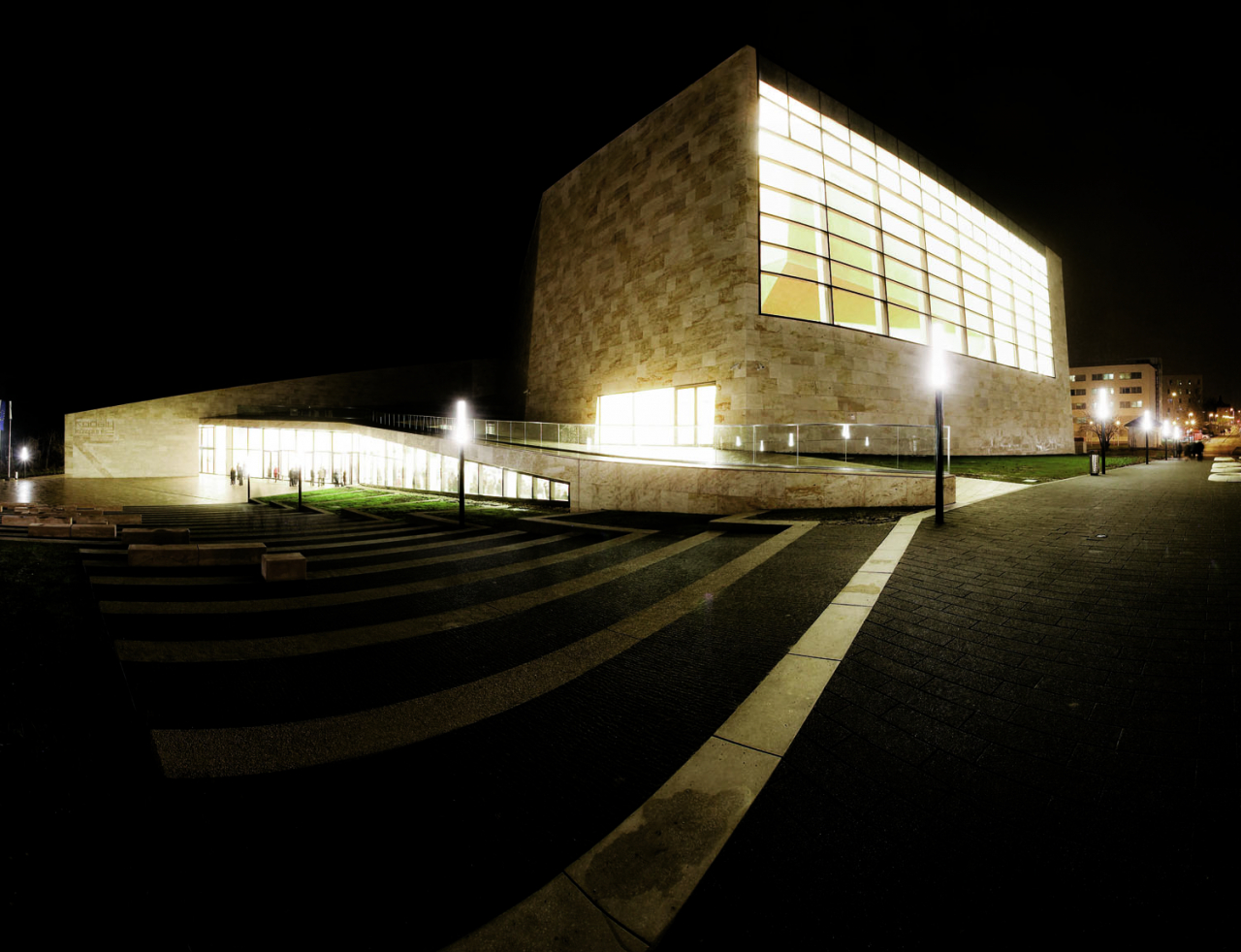
Contact

Ticket Office of Kodály Centre
7622 Pécs,
Breuer Marcell sétány 4.
jegypenztar@pfz.hu
+36-72-500-300
Opening hours:
Mon–Thu: 10.00–6.00 pm
Fri: 10.00–6.00 pm
Sa–Su: only on performance days, open from 90 minutes before the performance start time

The Headquarters and Rehearsal Room of the Pannon Philharmonic
7622 Pécs,
Breuer Marcell sétány 4.

